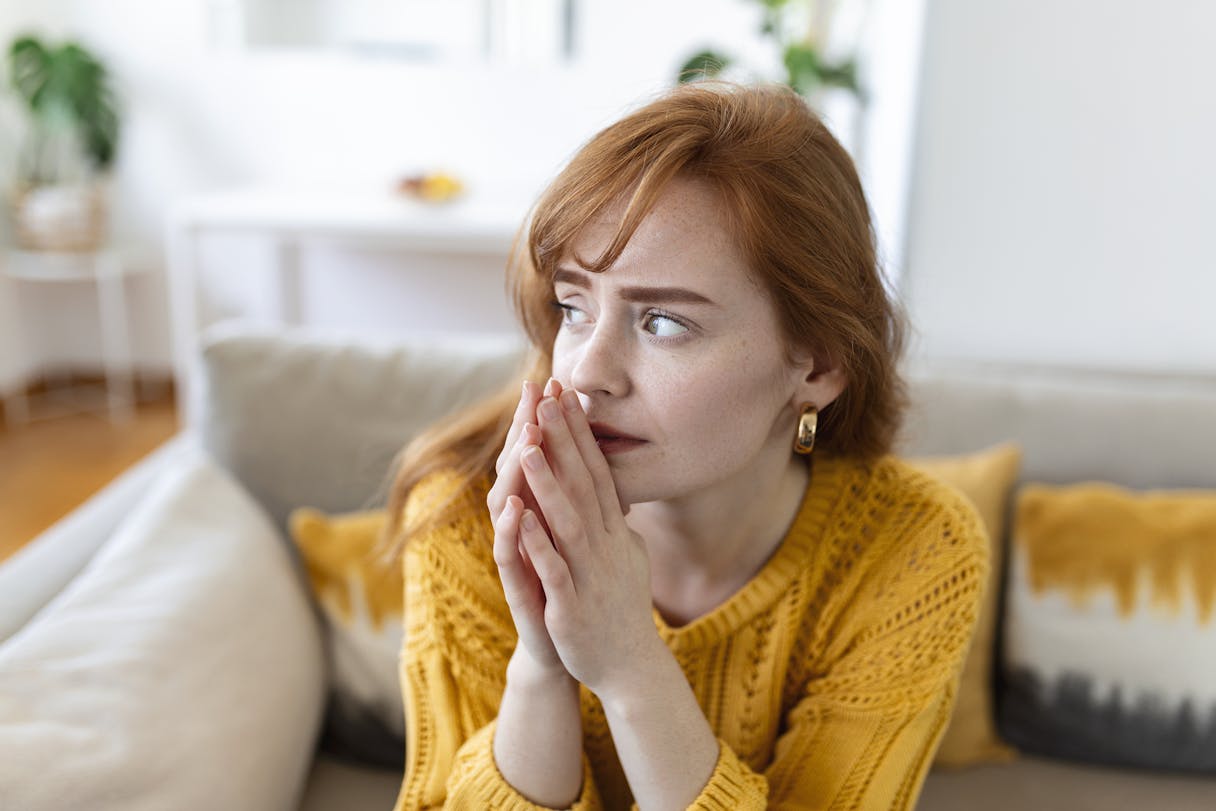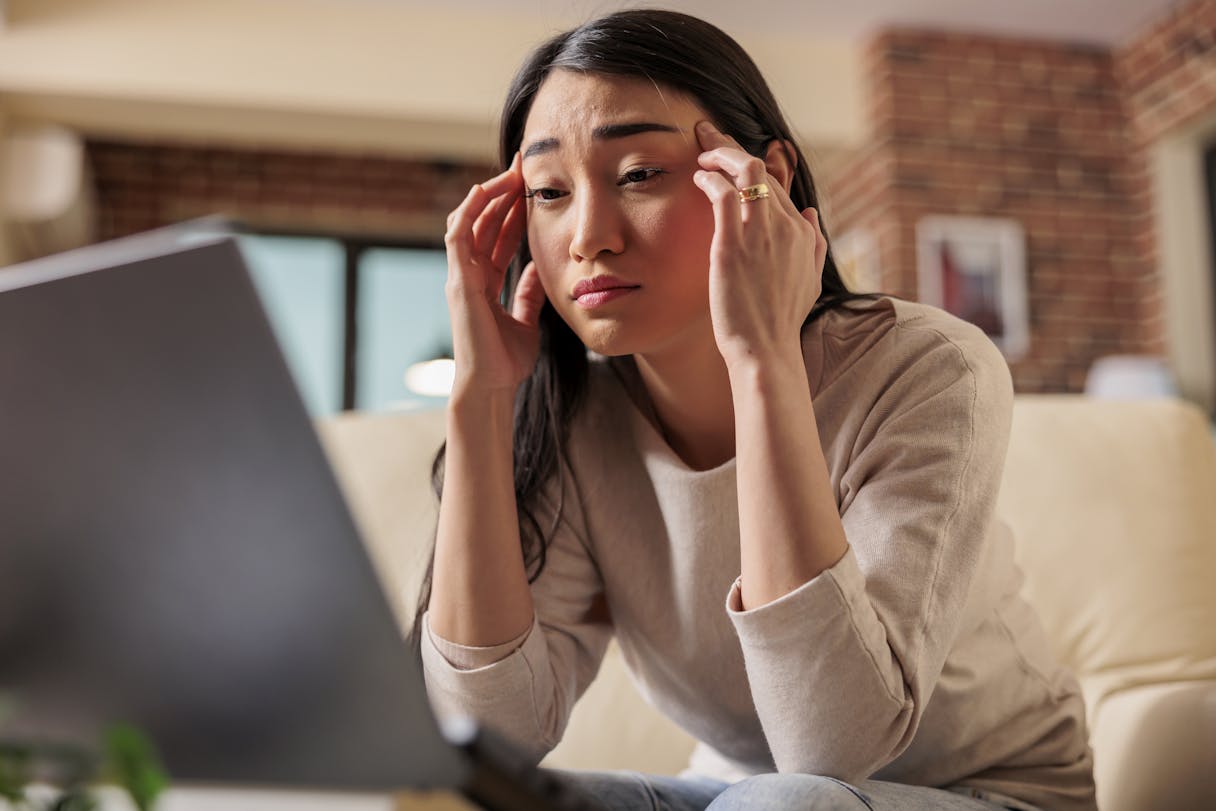Managing depression alone can be difficult. Find a therapist, prescriber, or both who meets your needs. Learn more
Believe it or not, there are positives to anxiety. It’s there to protect you from harm and warn you that you might be in danger. That’s really useful in dangerous situations! But persistent anxiety and chronic stress make you feel like you’re in danger all the time, even if nothing is happening. And that can make living your life incredibly difficult.
If you’re living with anxiety, you’re definitely not alone. Around 40 million adults in the U.S. live with an anxiety disorder. Post-COVID “re-entry anxiety” isn’t helping. Mental health statistics show that about 50% of Americans have reported feeling anxious to reintegrate into social situations post-vaccine.
Luckily, there are many different ways to manage your anxiety. Committing to therapy and finding the right medication routine are both effective routes that we highly recommend. But there are some natural remedies for anxiety and stress that you can add to your routine to give your treatment an extra boost.
Exercise
As a human, you’re meant to move your body as much as possible. When you exercise, your body gets increased levels of dopamine, serotonin, and adrenaline, which in turn boosts your mood and decreases anxiety. Going outside and getting some Vitamin D can also help your mood levels and help you feel less anxious over time. These are just a few ways that mental and emotional health can be improved through exercise.
TIP: If you don’t exercise regularly, try starting out with something easy, like some gentle stretches or a 5 minute walk. Aim to do at least one thing to move your body three days per week.
Meditation & Mindfulness
Meditation helps you calm down and focus on your breathing, which brings your attention away from your anxious thoughts. Mindfulness brings you back into the present moment and helps you focus on what’s happening around you instead of your anxiety. Using these techniques regularly can help you with stress management and feel less anxious over time. Learn more about beginning and learning how to meditate.
TIP: A common misconception about meditation is that your mind has to be completely blank. That’s not true! In fact, random thoughts are to be expected. While meditating, you can simply acknowledge these thoughts in a non-judgmental way while bringing your focus back to your breathing.
Limiting Caffeine & Alcohol
Your morning coffee ritual may come as naturally to you as breathing, but drinking three or four cups of coffee over the course of a day may have negative effects. Consuming too much caffeine can make you feel jittery and overly anxious. The same goes for alcohol. While it may make you feel better in the moment, it can also make your anxiety worse over time. Limiting or eliminating these things from your diet can help improve your mood and make you feel less anxious in general.
TIP: If you don’t want to quit caffeine cold turkey, try making the switch from coffee to tea. While teas like black or green tea have a fair amount of caffeine, they still have less caffeine than coffee and will give you that boost of energy you want.
Eating a Healthy Diet
When you’re feeling anxious, you might turn to junk food for comfort, but an unhealthy diet could cause more problems for your mood than you think. The right amount of fruits and vegetables, whole grains, and healthy fats supply your brain with the sustenance it needs. A healthy diet can help improve your mood and make you feel less anxious.
TIP: The next time you need a pick-me-up, try swapping out junk food for healthier options. Some examples include eating dark chocolate instead of a rich dessert, getting grilled chicken instead of fried chicken, or replacing burger buns with lettuce buns.
Getting Regular Sleep
Not getting enough sleep makes your anxiety worse, which in turn makes it hard for you to fall asleep. Being anxious and not being able to fall asleep is a vicious cycle! Building healthy sleep habits, like not using your phone or other computer screens at least 30 minutes before bed, can help you sleep better and improve your levels of anxiety significantly.
TIP: If you’d like to see how to fix your sleep routine, try tracking your sleep patterns by using an app on your phone. Seeing your patterns laid out can help you figure out what you need to adjust when it comes to falling and staying asleep.
Spending Time with Pets
Research has shown that spending time with your pets can help reduce cortisol, the stress hormone. Lower cortisol levels leads to reduced stress and can help ease your anxiety symptoms. Cuddling, petting, or otherwise touching your pet can help meet your need for touch and affection in situations when you’re feeling anxious and stressed.
TIP: If you don’t have a pet, try going to an animal shelter or a place like a cat cafe to play with the animals there. Who knows, maybe you’ll end up leaving with one!
Journaling
Being anxious and not venting to release your anxiety can cause physical symptoms to appear in your body. If you’re finding it hard to process your feelings in real time, writing down your feelings can help reduce your anxiety and increase your well-being. Journaling is a good way to vent them in a healthy, private, and non judgmental way.
TIP: If you’re having trouble getting started, take a tiny first step by writing down one sentence about how you’re feeling or what you’re anxious about. Sometimes that’s all it takes!
Aromatherapy
Smelling certain essential oils could help calm you down when you’re feeling particularly anxious. Essential oils are extracted from the cells that give plants, herbs, and parts of trees their scent, or the “essence” of their scent. Research has suggested that lavender essential oil in particular can help manage symptoms of anxiety and improve sleep quality.
TIP: Do your research when picking out essential oils! Work with your doctor or an aromatherapist to learn which essential oils would be the most beneficial for you. Keep in mind that aromatherapy should not be used as a replacement for your regular medication routine.
Make yourself laugh
Laughing is a great way to decrease your stress and increase feelings of well-being. Research shows that even fake laughter can produce a hit of dopamine, the chemical that controls feelings of reward and pleasure in your brain. Try talking to someone who knows how to make you laugh, or watching your favorite TV comedy or movie, or your favorite stand-up comedian set.
TIP: If you’re too anxious to laugh by yourself, try watching shows with a laugh track or downloading an app that allows you to play a laugh track on your own. Hearing others laugh can unlock your own laughter and help you feel better.
Chew a little gum
For a quick and easy way to cope with anxiety, chewing gum could be a good solution! Research has found that chewing gum could lower cortisol, the stress hormone, and decrease levels of anxiety in the short-term . While scientists aren’t precisely sure why it helps, they believe that chewing gum improves blood flow to the brain, improving your mood and well-being.
TIP: Stick to sugar-free gum when you buy your next pack! Less sugar means fewer calories, and chewing sugar-free gum for 20 minutes after eating has been shown to not only freshen breath, but reduce cavities as well.
As you can see, there are many different natural remedies to help manage your anxiety. These techniques can be used along with therapy and medication management to help you lead a lifestyle without excessive anxiety.
At Cerebral, we believe that everyone deserves access to mental health care to help manage conditions like anxiety. Our virtual membership services includes access to Cognitive Behavioral Therapy (CBT) exercises, with anxiety-management resources like:
- Information and exercises on grounding techniques
- Calming and relaxing guided meditations
- Using journaling and other techniques to understand yourself
Learn more about how Cerebral can help manage your anxiety by taking a free emotional assessment today!

Understanding and Addressing the Feelings Behind Anxiety

9 Physical Symptoms of Anxiety

The Difference Between Anxiety and Fear

If you’re having a mental
health emergency
If you're in emotional distress and
need immediate support
For National Suicide
Prevention Hotline
